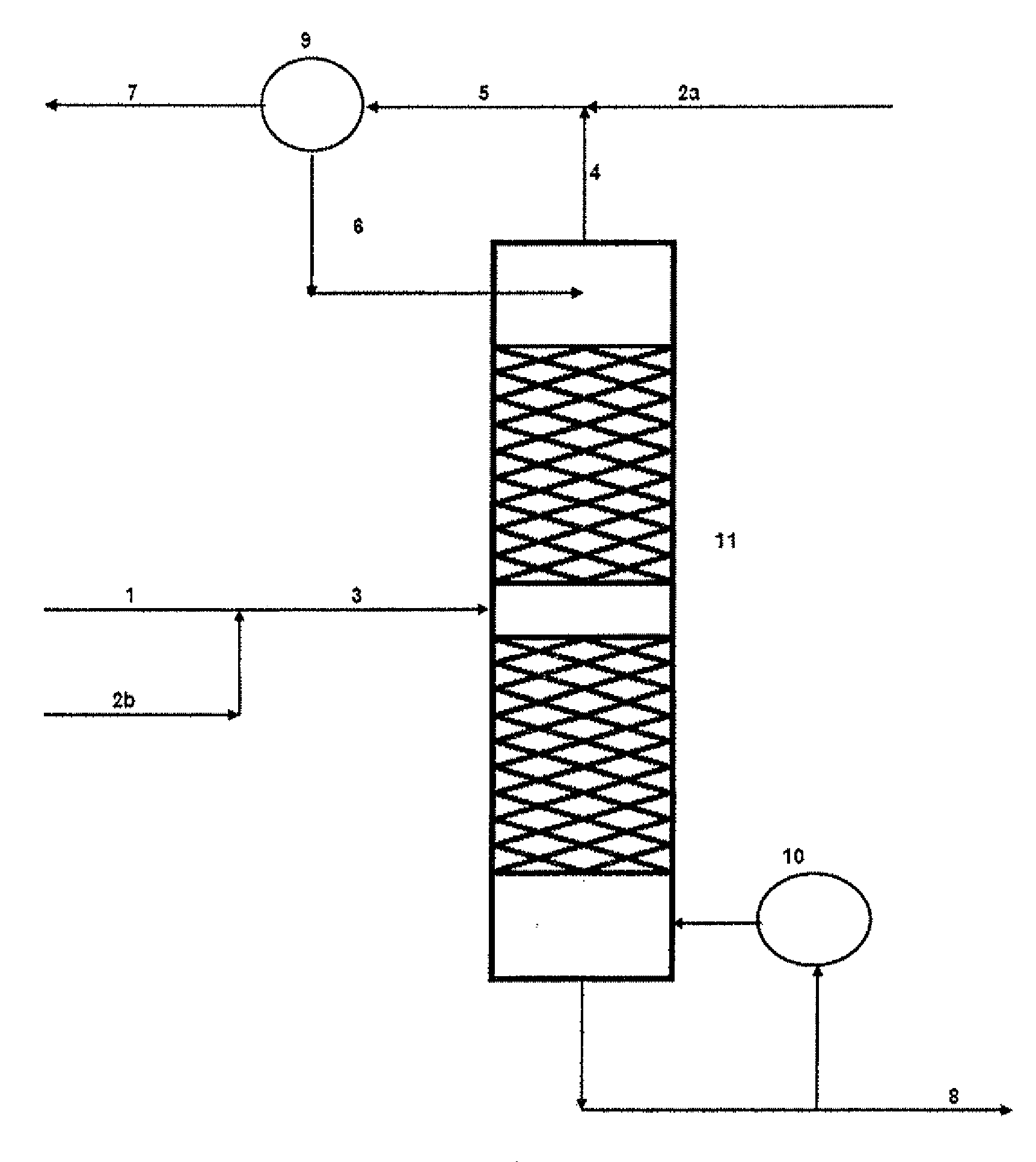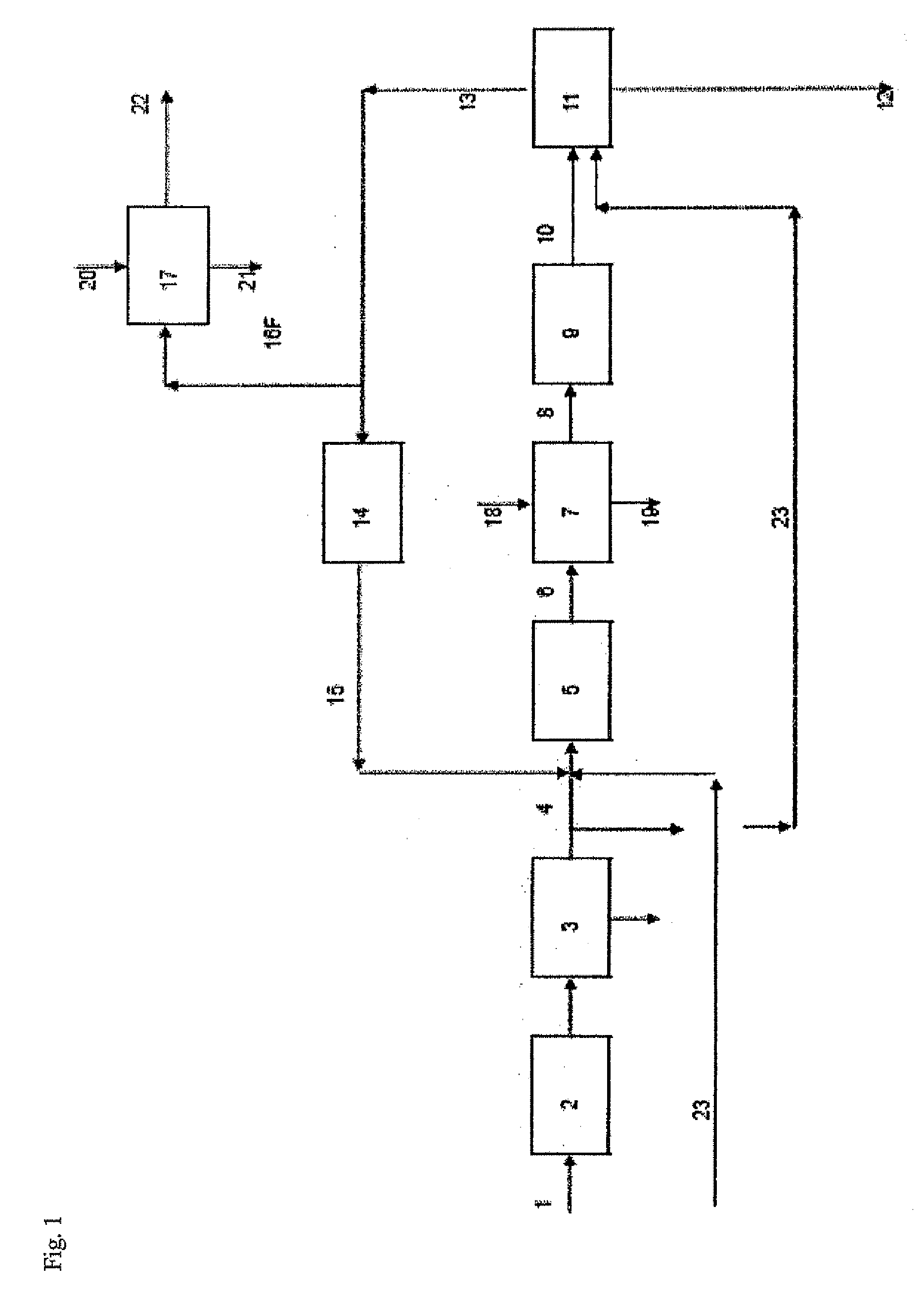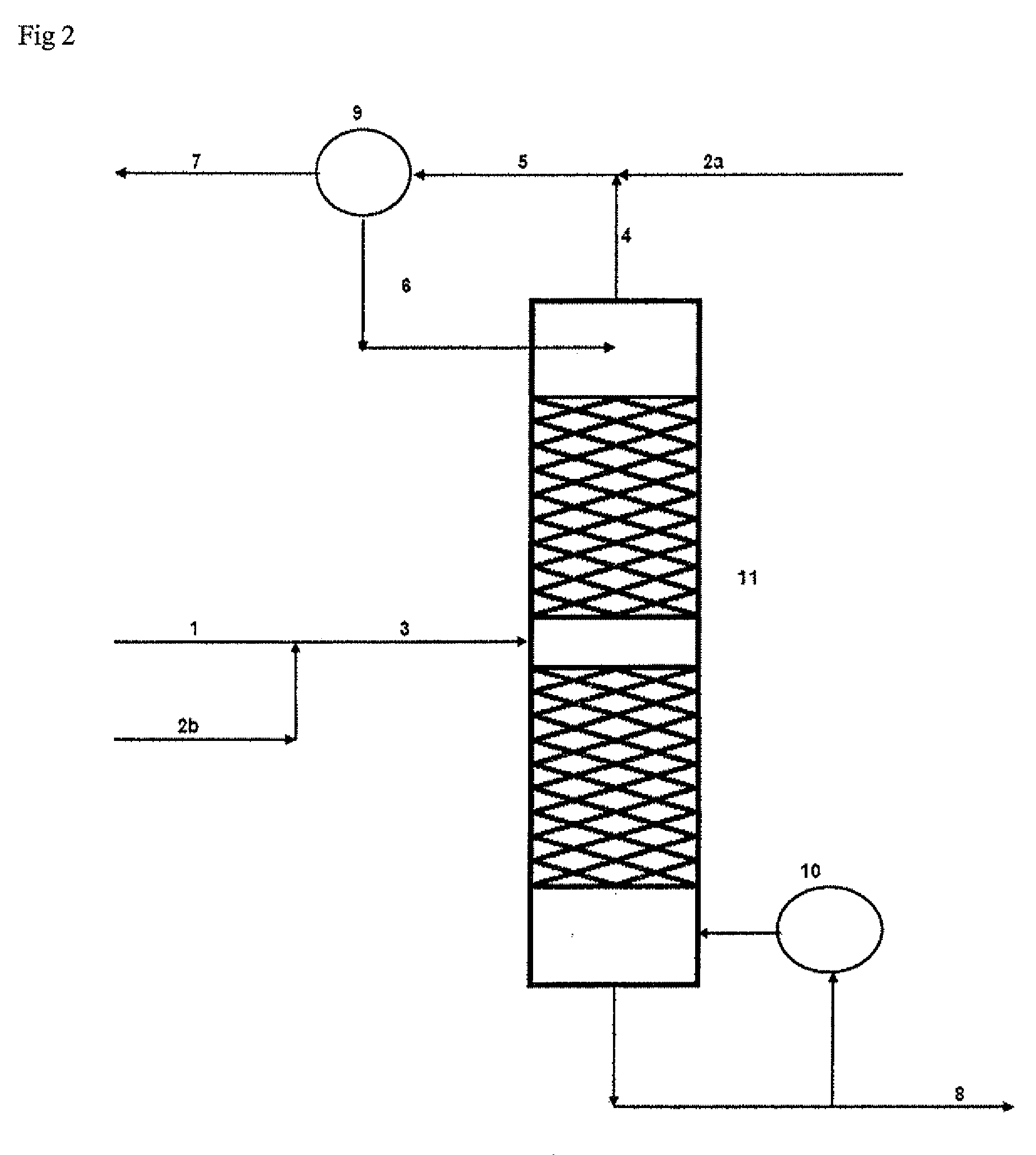Processes for separating chlorine from a gas stream containing chlorine, oxygen and carbon dioxide
a technology of chlorine and gas stream, which is applied in the field of process of separating chlorine from a gas stream, can solve the problems of significant quantities of oxygen used in excess, significant proportions of unreacted hcl gas generated, and significant quantities of unreacted hcl gas
- Summary
- Abstract
- Description
- Claims
- Application Information
AI Technical Summary
Benefits of technology
Problems solved by technology
Method used
Image
Examples
example 1
[0074]Referring to FIG. 1, HCl gas 1 from an isocyanate plant for the production of methylene diisocyanate, typically consisting of >99 vol. % HCl, 2.
[0075]In a downstream low-temperature gas purification system 3, the chief portion of the organic impurities is removed from the HCl gas.
[0076]The greater part (85%) of the purified HCl gas 4 is fed into a Deacon reactor 5 together with an excess of oxygen 23 and the recycling gas from the chlorine separation 15. In this reactor the HCl gas is catalytically oxidised to chlorine at 370° C.
[0077]The process gas 6 from the reaction contains as its main components chlorine, oxygen and water of reaction together with unreacted HCl gas, carbon dioxide and inert gases.
[0078]The hot process gas is fed into a suitable quench 7 in which, by reducing the temperature to about 40-90° C., the water of reaction condenses out together with the majority of the unreacted HCl as an aqueous concentrated HCl solution.
[0079]The moist process gas 8, still co...
PUM
| Property | Measurement | Unit |
|---|---|---|
| temperature | aaaaa | aaaaa |
| pressure | aaaaa | aaaaa |
| temperature | aaaaa | aaaaa |
Abstract
Description
Claims
Application Information
 Login to View More
Login to View More - R&D
- Intellectual Property
- Life Sciences
- Materials
- Tech Scout
- Unparalleled Data Quality
- Higher Quality Content
- 60% Fewer Hallucinations
Browse by: Latest US Patents, China's latest patents, Technical Efficacy Thesaurus, Application Domain, Technology Topic, Popular Technical Reports.
© 2025 PatSnap. All rights reserved.Legal|Privacy policy|Modern Slavery Act Transparency Statement|Sitemap|About US| Contact US: help@patsnap.com



